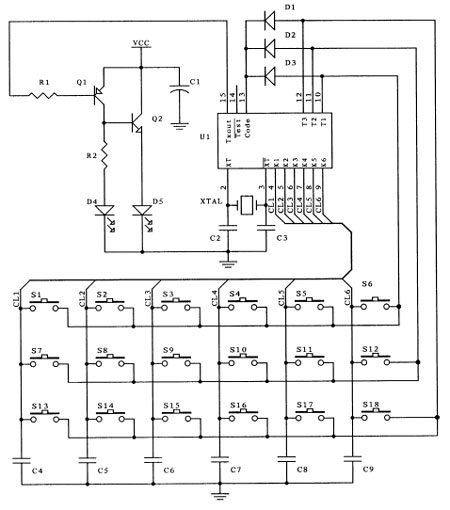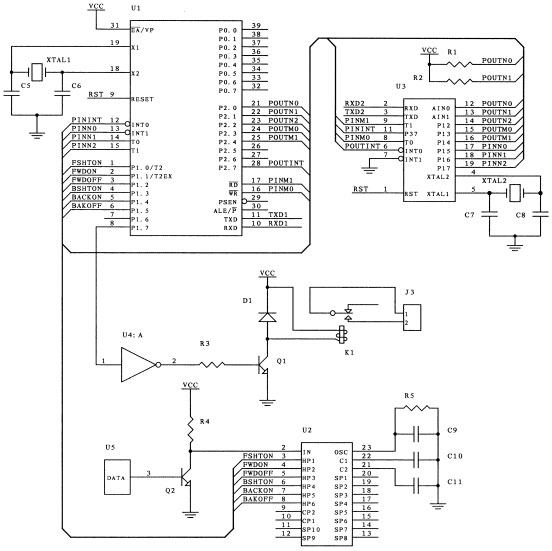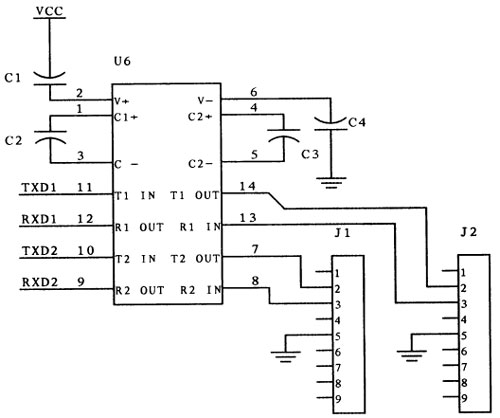(Institute of Railway Construction, Academy of Railway Sciences, Beijing 100081, China) Abstract: The tunnel light controller is a smart switch device designed for tunnel lighting. After installing the tunnel light controller, the patrol personnel can work under good lighting conditions, and at the same time effectively avoid the common light and save energy. At present, the whole country is vigorously promoting the construction of a conservation-oriented society. During the peak of electricity consumption in the summer of the last two years, the country's largest power gap is more than 20 million kilowatts. Many regions have been forced to impose power cuts, which has seriously affected the development of the national economy. At the same time, in the development of railways, the control method of tunnel lights is relatively backward, the awareness of power saving is not strong, and the phenomenon of power waste is more serious. On June 6, 2004, China launched the "Energy Conservation Publicity Week" nationwide and formulated the "Guide to Public Energy Conservation Behavior". It can be seen that it is imperative to realize intelligent control of railway tunnel lighting. In the railway tunnel lighting system, the AC contactor installed at the tunnel port can be used to close or cut off the power of the tunnel illumination lamp, and the lighting and extinction of the tunnel illumination lamp can be controlled. Before the railway patrol personnel enters the tunnel, the AC contactor is closed to illuminate the tunnel illuminator. When the railway patrol personnel leaves the tunnel, the AC contactor is disconnected to extinguish the tunnel illuminator. The advantage of this is that the patrolman is easy to operate and has less investment in installation. On the other hand, it takes a certain amount of time from the patrol personnel entering the tunnel to getting out of the tunnel. Especially when the tunnel is long, it will take more time, which will inevitably result in waste of electric energy. What is more serious is that in some places, some non-workers arbitrarily open the control cabinet to illuminate the tunnel lighting when they walk through the tunnel, and even use the wooden stick to hold the AC contactor to make the tunnel lighting always clear. In the long run, the waste of electricity is considerable. In order to avoid the common phenomenon of tunnel lighting, the ideal lighting method is: the opening of the tunnel lighting is completely under the control of the railway patrol personnel, and the front lighting is gradually illuminated as the patrol personnel march; The lights can be automatically turned off after the person walks through; if necessary, the lighting time of a certain local area can be arbitrarily adjusted. In this way, energy can be saved, and the phenomenon of constant light caused by non-workers can be effectively prevented. Due to its relatively low price and good color rendering index, sodium lamps have been widely used in railway tunnel lighting and road lighting. On the other hand, sodium lamps require a certain amount of ignition time. If it can only be turned on under the light at each time, due to the influence of the start-up time, the lighting will be weak. After the patrolman walks out a long distance, the brightness will be achieved. This kind of lighting is very uneconomical. This paper introduces an inexpensive single-chip computer-based tunnel light intelligent controller. Each controller uses the serial communication port of the single-chip microcomputer to communicate with the adjacent controller to control the opening and closing of the tunnel light. Illumination mode operation can avoid the influence of the ignition time. The use of tunnel light intelligent controllers has two main advantages: 1. Composition of the controller <br> The intelligent controller of the tunnel light is composed of a remote control transmitter and a receiving controller (one remote control transmitter corresponds to multiple receiving controllers). The transmission of the remote command is completed by pressing the six keys on the remote control. The six keys are: short-open on the upstream (time-out after the open), on-off normally open, up-off, down-down, on-off, on-off . A remote control transmitter can be used to issue control commands in the vicinity of any of the tunnel lights. The function of the command is as follows: 1.1 Remote Control Transmitter The remote control transmitter is mainly composed of SZ9148 chip. SZ9148 integrated circuit is made by CMOS technology and is a kind of infrared coded transmitting device with better performance. When the oscillator frequency is 455 kHz, its transmit carrier frequency is 38 kHz. Through the pins K1~K6 and T1~T3 on the chip, it can be connected into a 6×3 matrix keyboard, and the six buttons can be used to control the tunnel light.
1.2 Receive Controller Each receive controller consists mainly of a single AT89C52 single-chip computer. The receiving controllers of each tunnel light are connected in a serial manner to achieve illumination control of the entire tunnel. Therefore, there are three sources for receiving control commands: a remote control transmitter, an upstream direction reception controller, and a downstream direction reception controller.
Figure 2 Receive Controller 1.3 Serial Communication Interface In order to make the serial communication interface between the receiving controllers conform to the RS-232 standard, the MAX232 chip can be used to convert the RS-232 and TTL levels, as shown in Figure 3.
Figure 3. Serial port connected to MAX232 chip 2. Program Design Points <br> The programming of the AT89C52 mainly includes three parts: command reception, command priority discrimination, and execution of priority commands and sending control commands to subsequent uplink or downlink receiving controllers. The command reception includes scanning of the decoder output and identification of the received command, receiving a command transmitted by the serial port, and a command transmitted by the parallel port. 3. Summary <br> Through the test, the tunnel light intelligent controller feels better, that is, it can conveniently control the switch of the tunnel light, effectively avoid the common light and avoid the inconvenience caused by the longer starting time. In practical applications, the serial communication method can also be changed to wireless transmission, which makes the construction more convenient. China has a vast territory and numerous mountainous areas. With the rapid development of railway construction, the number of tunnels will increase greatly. It is imperative to save electricity. The application of intelligent control of tunnel lights is broad. main reference: Achieving the Intelligent Control Abstract:Tunnel lamp intelligent controller is a switch device designed for tunnel illumination. After installing the controller, the patrols could work under good illumination condition.
Railway Research Institute of the Institute of Railways Contact: |
Steel Tubular Pole, Galvanized Tubular Steel, Steel Tubular Pole Tower
YIXING FUTAO METAL COMPONENT UNIT CO.,LTD , http://www.chinasteelpole.com



